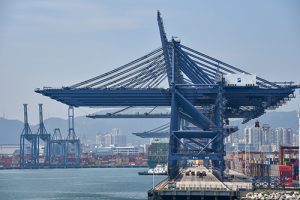Last year, port congestions reduced cargo owners to charter or acquire their own vessels to ship goods due to equipment shortage. This time, we can expect the bottleneck to reach a whole new level – spurred by a cocktail of conflicts and COVID-19 flare-ups.
Exacerbated by a conflict
When vessels were lining up to load and unload, every ship and cargo owner was frantically searching for alternatives. With the crossfires in progress, charterers are exploring other sea routes for safety’s sake – in the name of avoiding combat areas. Moreover, every business is risking no-deliveries and non-payments as sanctions mount. “At times like these, it is more important for companies to get their goods delivered even if the cost of transport is higher,” said Um Kyung-a, transportation analyst at Shinyoung Securities Co. in Seoul. “It is more important for them to keep their production going.” That points to the direction that space and time loadings are no longer a concern.
Cargoes take a month to reach Europe from Asia, compared to land which only take half the time but double the costs. Marcus Balzereit, a Senior Vice President for Asia Pacific from Kuehne + Nagel International AG noted, “We see that sea freight remains the backbone, able to move large volumes at a fairly reasonable price.”
The industry is already under tremendous pressure from China’s latest COVID-19 wave and resulting lockdowns. Shenzhen’s Yantian port is reportedly clogged up and estimated delays were projected to hit at least 13 vessels. Glenn Koepke, General Manager of FourKites Inc. (supply chain analyst) added, “Getting vessel capacity and getting shipping on time to destination has already been a challenge in the past 6 months. This is just one more thing added to an already fragile network.”If one is to take it as an appreciating shipping, it could not come at a worst time. When more cargoes are added, it just narrows the space between vessels.






